Valparaiso is quite literally a city of dramatic ups and downs. Chile’s second largest metropolis, “Valpo” belongs to that rarefied tribe of romantic port cities — San Francisco and Lisbon are prominent members — where ship studded seas collide with vertiginous house clad hills. The views from on high are inevitably dazzling. But navigating steep ascents on foot, while picturesque, can be wearying, even for the most avid StairMaster fiends. Which is where the elevators come in.
As famed as San Francisco’s cable cars and Lisbon’s bondes (trams) are Valparaiso’s ascensores. Technically ascensor (elevator) is a misnomer, since only one is an actual elevator. The rest are funiculars, rustic wooden boxes with brightly painted exteriors that shudder and swoosh up and down the city’s 40-something cerros, or hills.
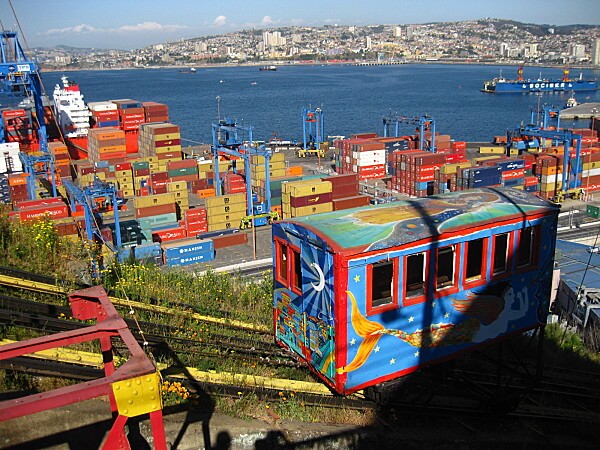
One of Valparaíso’s ascensores
This quaint and quintessentially porteño mode of transportation dates back to Valpo’s boom days when it was one of the most important ports in the Americas. Until the 20th century, the only available sea route from the Atlantic to the Pacific was via the treacherous tip of South America. As the first port after Cape Horn, Valparaiso became an obligatory pit stop and, eventually, a thriving hub for immigrants seeking their fortunes in shipping, mining and banking.
Not wanting to mingle with the sailors, stevedores, and prostitutes (at least publically) along the waterfront, nouveau riche expats built palatial manors on the hills overlooking the sea. To whisk them to and from the lofty cerros, they hit upon the solution of ascensores. The first steam engine-operated funicular went into service in 1883; by the early 20th century, there were more than 30.
Unfortunately, when the Panama Canal opened in 1914 — creating a shortcut from the Atlantic to the Pacific — Valparaiso’s boom began to go bust. Catastrophic earthquakes and fires also wreaked havoc upon the city – and its ascensores. By the early 21st century, only 16 had persevered, a feat that earned them status as National Heritage Monuments.
Historic Valparaiso itself was declared a UNESCO World Heritage Site in 2003. And yet, despite spurring a major revitalization of this bewitchingly ragged city, today only a half dozen ascensores are still in operation. Here’s a brief guide on how to take full funicular advantage of the proud survivors:

Ascensor Concepción
Valparaíso’s oldest ascensor has been in service since 1883. From the historic Calle Prat, lined with grand 19th-century money-making temples such as the Bolsa de Corredores (Stock Exchange) and the former Banco de Londres (today occupied by Banco Santander), the funicular rises up to Cerro Concepción. Together with adjacent Cerro Alegre, Cerro Concepción is one of the city’s most picturesque neighborhoods, crammed with rainbow colored Victorian houses and funky little boutiques (and boutique hotels), and ripe for wandering.
The ascensor alights at Paseo Gervasoni, a manor-lined terrace with sweeping sea and city vistas. Cerro Concepción is drenched in an arty, writerly vibe nourished by a significant coffee culture. Cafe del Poeta 7 is an elegant café, its walls lined with poetry books, which serves a mean once — Chilean afternoon tea. Nearby, Color Café channels more contemporary artsiness with walls covered in napkin art and the lure of homemade truffles. For caffeine (or hot chocolate) with a view, Café La Belle Époque (at Papudo 527) offers an intimate terrace along with an in-house art gallery.
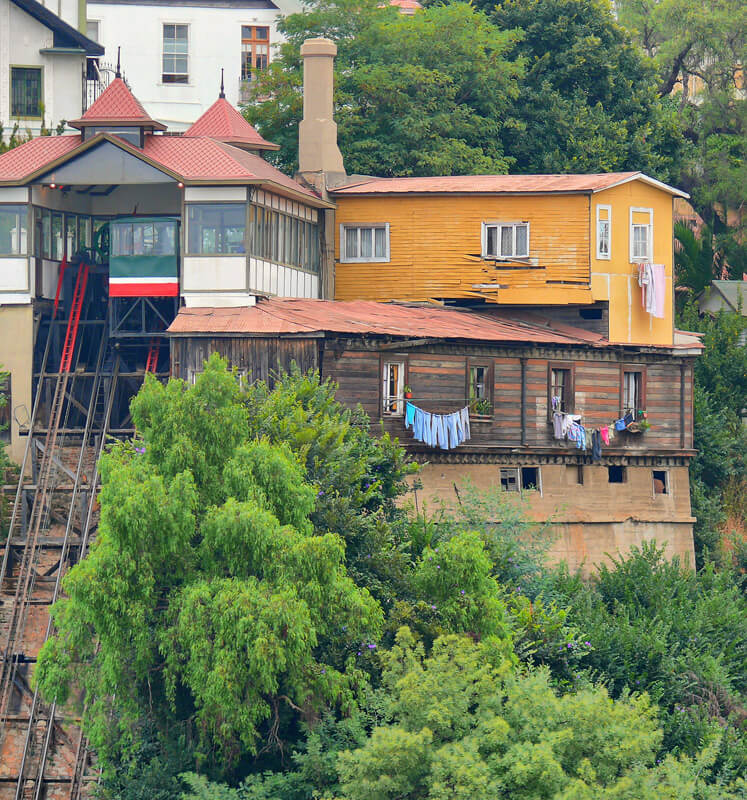
Ascensor el Peral
Inaugurated in 1901, this recently renovated funicular departs from the old court buildings, adjacent to Valparaiso’s monumental main square of Plaza Sotomayor and ascends to Paseo Yugoslavo, a terraced boardwalk on Cerro Alegre lined with striking old houses looking out to the Pacific. One of the most arresting is the handsomely restored art nouveau Palacio Baburizza. Once home to a rich, eccentric and lonely Yugoslavian immigrant, today it shelters the city’s Museum of Fine Arts.
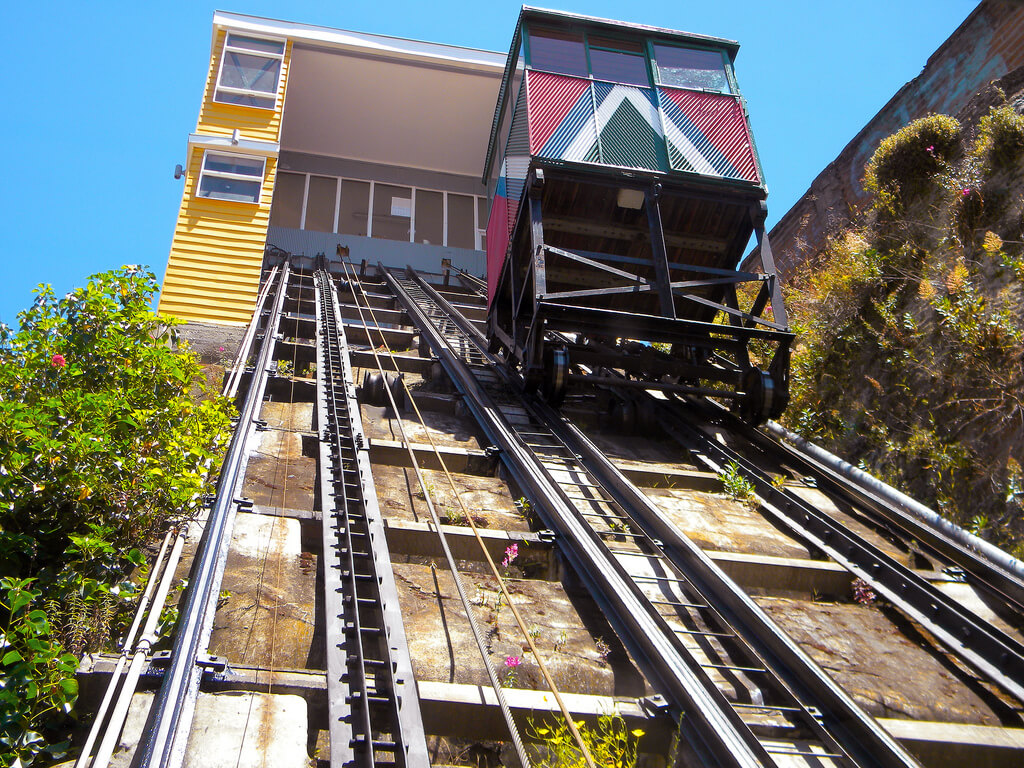
Ascensor Reina Victoria
Cerro Alegre can also be reached via this funicular named after Britain’s Queen Victoria and inaugurated two years after her death in 1901. From Calle Elias, the ascensor rises up to scenic Paseo Dimalow, set amidst Cerro Alegre’s nexus of hip and happening restaurants, bars and boutiques. Worth popping into are galleries such as Bahía Utopíca and Casa E, which showcase works by local artists, and Cafe Vinilo 7 , a terrifically funky café/bistro with a hidden garden, not to mention inventive food, brutally strong coffee and homemade ice cream made from exotic Chilean fruits and nuts.
Cerro de Alegre is rife with stunning vantage points from which to watch the sunset over the city. Rooftop bars abound, but Taulat is an intimate tapas bar with sublime views and frothy Pisco Sours.
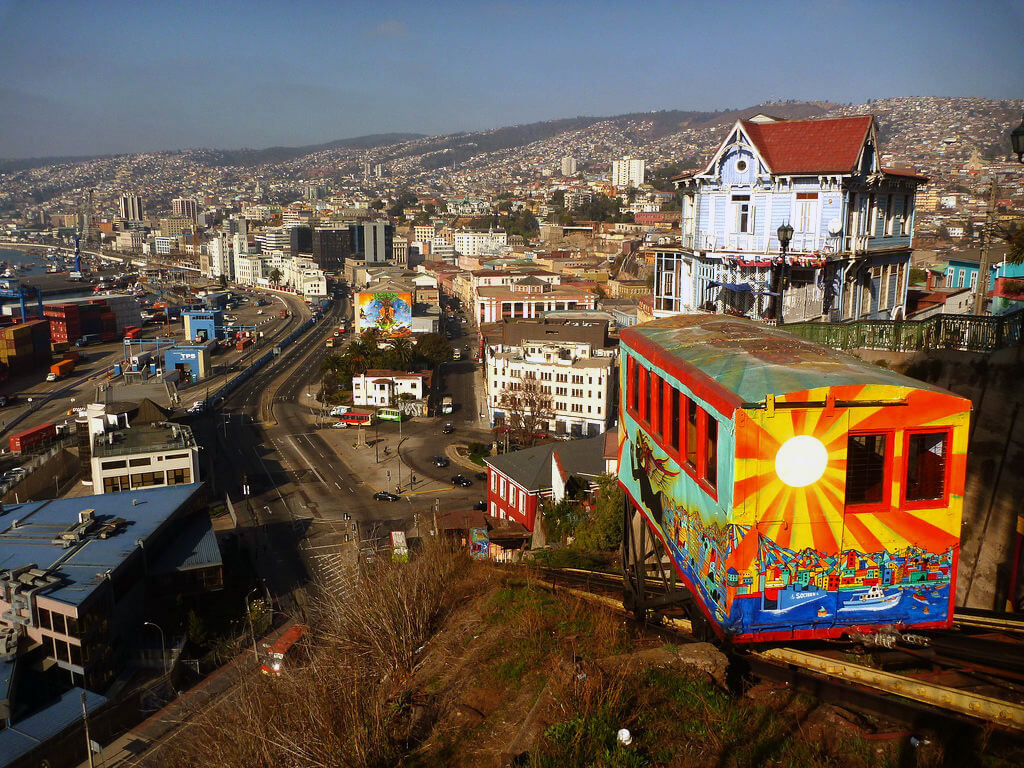
Ascensor Artillera
The western edge of the port district is a lively, gritty area, home to Valpo’s oldest church, and its oldest bar. Since they’re only one block from each other, after spiritual contemplation at the Iglesia de la Matriz, you can take a libation of cheap and potent Chilean chichón at the dimly atmospheric Bar Liberty, which has been slinging drinks since 1897.
Nearby, Plaza Aduana is anchored by the imposing colonial Customs house and the Ascensor Artillera, built in 1893, which takes passengers up the Cerro Artillera. At the top, is the most panoramic boardwalk of them all, Paseo 21 de Mayo as well as Vinizio, a cavernous wine bar/boutique specializing in small Chilean vintages and compelling views of cranes lifting containers at the port below.
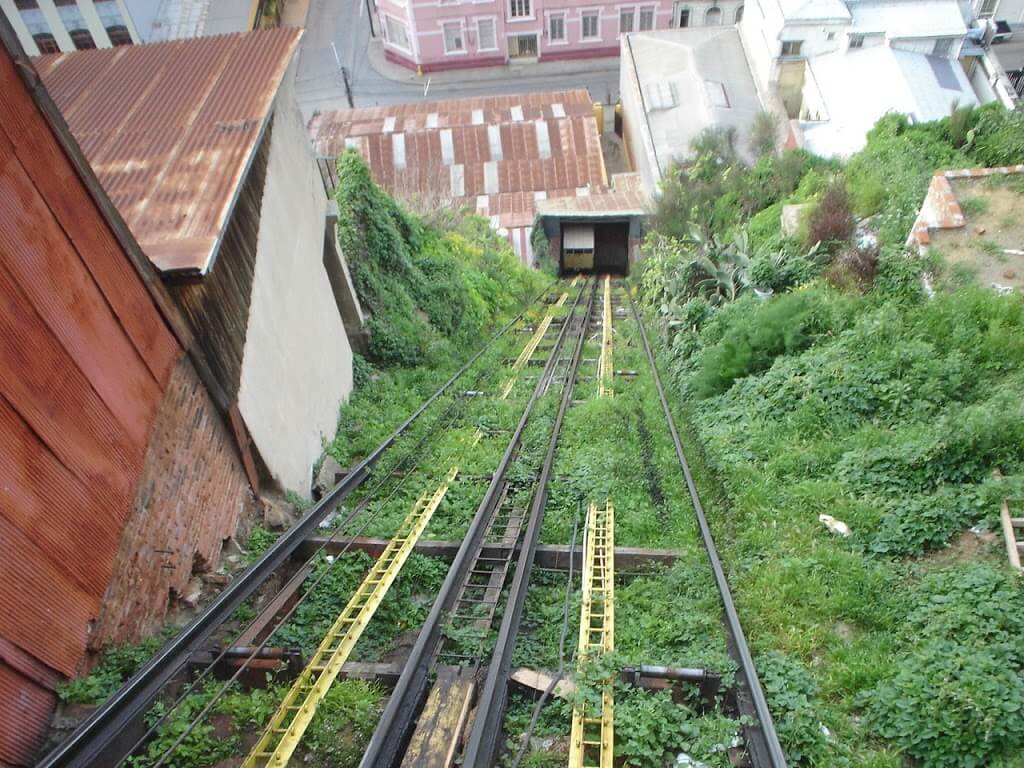
Ascensor Espíritu Santo
Dating from 1912, this “younger” funicular offers a rickety ride from Calle Aldunate up the slopes of Cerro Bellavista. Exiting onto Calle Rudolph, you’ve still got some uphill trekking ahead to reach the city’s most popular pilgrimage site; the madcap 5-story home that poet Pablo Neruda built “in the air” and christened La Sebastiana.
Happily, the route weaves through the Museo a Cielo Aberto, a twisting labyrinth of houses and stairways adorned in murals and frescoes. Named in honor of the ascensor, Espíritu Santo is a contemporary Chilean restaurant offering creative, locally sourced dishes and — in keeping with Valpo’s highs and lows — captivating city views.